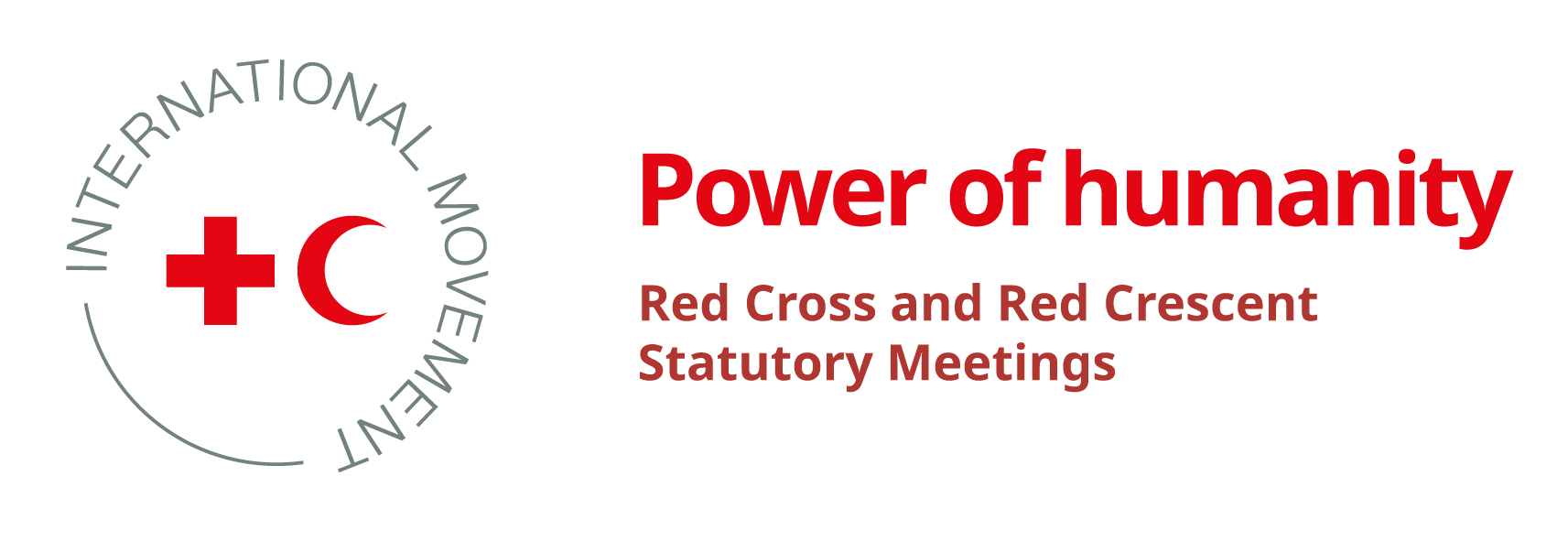About the International Conference
-
What is the International Conference?
The International Conference of the Red Cross and Red Crescent is the supreme deliberative body of the International Red Cross and Red Crescent Movement (the Movement), where the High Contracting Parties to the Geneva Conventions come together with the components of the Movement to discuss key matters of humanitarian concern and to make joint commitments.
It is a unique non-political forum in which the Movement components have the same voice as States.
The International Conference aims to:
– contribute to respect for and development of international humanitarian law (IHL)
– improve the safety, security and dignity of individuals by strengthening legal frameworks and policies
– shape the global humanitarian agenda
– foster relationships, alliances and synergies. -
When does the International Conference take place?
The International Conference usually takes place every four years. -
Who attends the International Conference?
Members of the Conference
The components of the International Red Cross and Red Crescent Movement:
– the National Red Cross and Red Crescent Societies (currently 191)
National Societies are recognized as and act as auxiliaries to their national authorities in the humanitarian field. They provide a range of services, including disaster relief, and health and social programmes. In wartime they assist the civilian population and support the medical services of the armed forces.
– the International Federation of Red Cross and Red Crescent Societies (IFRC)
– the International Committee of the Red Cross (ICRC)
States Party to the Geneva Conventions
Switzerland, as the depository State of the 1949 Geneva Conventions and their Additional Protocols, maintains the list of the High Contracting Parties to the Geneva Conventions.
The Geneva Conventions and their Additional Protocols are at the core of international humanitarian law, the body of international law that regulates the conduct of armed conflict and seeks to limit its effects.
The Additional Protocols specifically protect people who are not taking part in the hostilities (civilians, health-care workers and aid workers) and those who are no longer participating in the hostilities, such as wounded, sick and shipwrecked soldiers and prisoners of war.
The Geneva Conventions and their Additional Protocols call for measures to be taken to prevent or put an end to all breaches. They contain stringent rules to deal with what are known as “grave breaches”. Those responsible for grave breaches must be sought, tried or extradited, whatever their nationality.
Observers, which include humanitarian organizations, the United Nations and several of its specialized agencies, non-governmental organizations and other humanitarian partners. -
What are the outcomes of the International Conference?
The International Conference takes decisions in the form of resolutions. It endeavours to adopt these resolutions by consensus.
In addition to resolutions, participants also make voluntary commitments in the form of pledges. These pledges are an important tool for enhancing cooperation between Conference participants and fostering dialogue with public authorities on the humanitarian agenda. They can be undertaken individually or jointly by several participants, or they can be open for signature to all members and observers willing to support and commit to a cause. -
Are the International Conference outcomes legally binding?
Participants are encouraged to ensure that Conference decisions and outcomes are effectively implemented, and are requested to report back on the status of implementation of resolutions and pledges through voluntary reporting.




